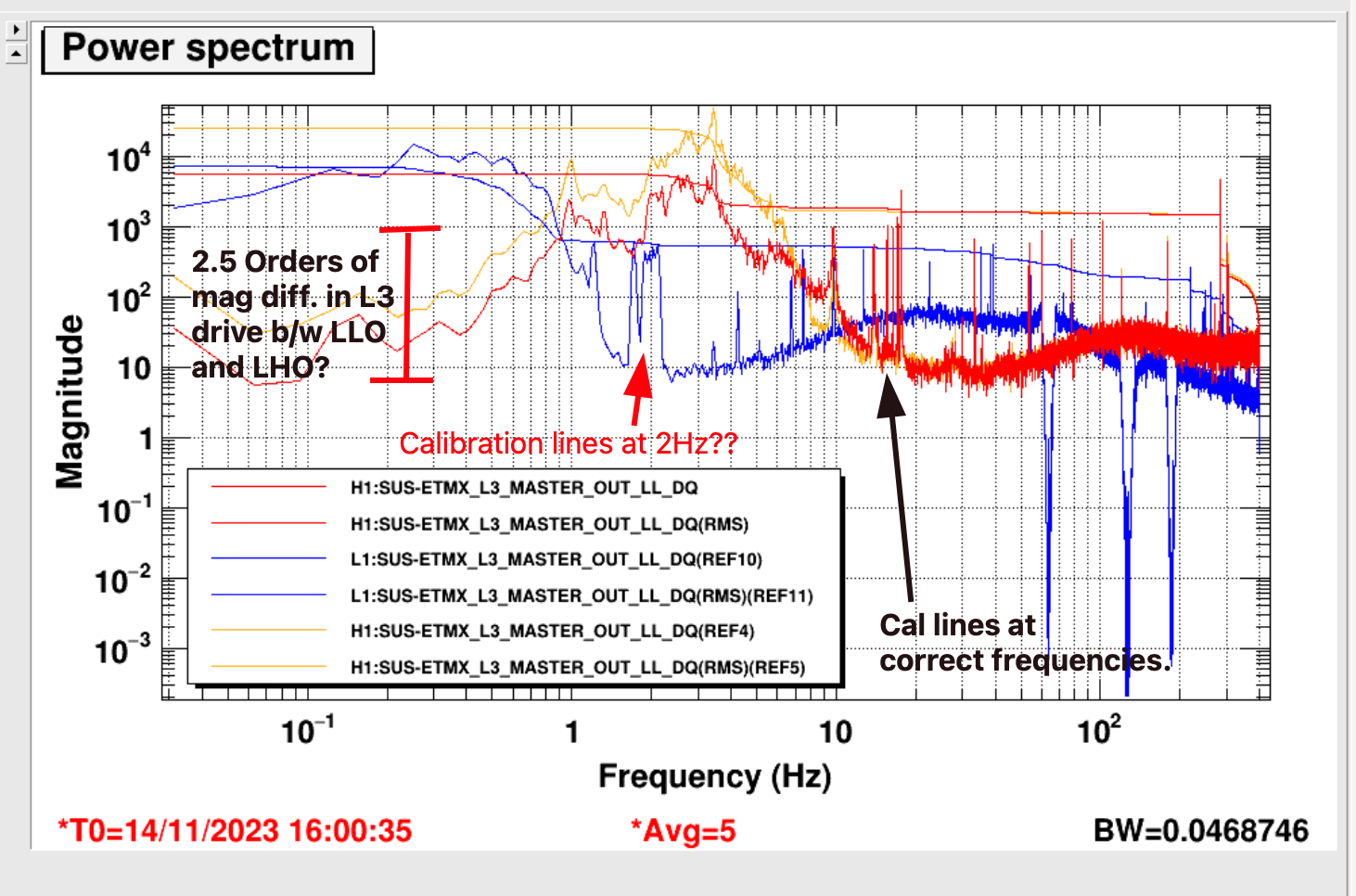Louis and I have been looking at increasing the offloading of the signal from the ESD to the PUM and UIM, in light of 73913.
I have attempted a few times to make measurements by exciting at the L2 LOCK L filter, this results in poor coherence even for amplitudes that are quite large in DARM, and turning up the amplitude slightly has caused a lockloss by saturating the ESD.
On Tuesday morning I engaged the PUM boost (L2 LOCKL FM2, boost4.5 which is a boost with a little resG aaround 4.5Hz). Some history (with links to old alogs about this filter is here: 48767) we used to run with this boost but turned it off in early O3 because angle to length cross couplings were causing instabilities of the DARM loop. On Tuesday morning I engaged this boost, and we stayed locked. The first attachment shows a comparison of our ETMX drives to LLO's (LLO also uses ETMY L1 for DARM control, but I haven't plotted that here), H1's usual configuration is in gold and the time with the PUM boost engaged is in red. The ESD drive RMS is reduced by more than a fator of 2 with the PUM boost engaged. I quickly tried a swept sine injection, and saw that the coherence was somewhat better than earlier measurements with a very small amplitude injection, so it seemed promising that we might be able to get a better measurement of the cross over with the PUM boost engaged.
Today I engaged this boost again during commisoning time and we immediately lost lock. The third attachment shows that turning on the boost certainly seems to be the cause of the lockloss.
We can probably rely on the pyDARM model for the PUM crossover, since the calibration measurements validate the model above 10Hz. Today I was able to make a measurement of the UIM crossover, which Louis can use to compare to pyDARM from 1-10Hz.
this is discussed in LHO:74771
Gabriele, Louis The comparison between LLO's and LHO's ETMX L3 drive above (fist attachment in Sheila's post) confused us. The difference between the two LHO traces makes sense. But there are several things wrong with the channel from LLO (blue trace in top right hand plot). First of all, we do not have 2 orders of magnitude in difference between the L3 MASTER OUT drives at LLO vs LHO. Also, the calibration lines show up at the wrong frequencies in the LLO trace.It turns out that if you use NDS2 and leave the Epoch Start date at the default 6/1/1980, DTT sees two of some channels with the same name (but different sampling frequencies!), see DTT_NDS_issue.png. The result in this case was confusion of what DTT was plotting in Sheila's alog. We think that DTT got confused by having multiple channels with the same name but differing sampling frequencies in its lookup list, leading to DTT plotting the 16kHz channel but somehow applying the wrong sampling frequency. To avoid this, we had to re-remember to be careful when copying and pasting similar channel names from one text box to another within DTT and to set the Epoch Start field to something more reasonable than 1980.








